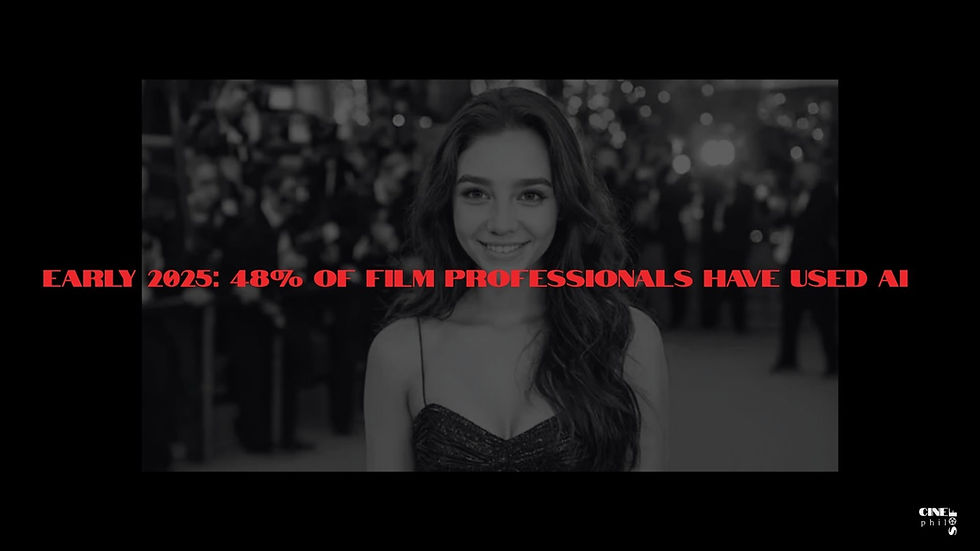Brothers in Fear, Sisters in Feminism (or Fetishism): Exploring Nunsploitation
- Sofia R. Willcox

- Sep 27, 2024
- 4 min read
As September 28th rises on the horizon, marking International Abortion Day, we find ourselves on the cusp of October and the onset of the witching season. With this in mind, let’s delve into the 2024 buzz surrounding the nun horror subgenre. Beneath the surface of horror lies an iceberg of factors that deserve consideration, revealing the societal anxieties, fears, and social concerns that shape our collective consciousness and use fantastic, disgusting, or scary elements to convey them.
The subgenre is widely known as Nunploitation. Exploitation, in terms of movies, refers to the nether regions of cinema’s margins, taking advantage of tawdry trends to create cheap, luridly saleable sensationalism. The genre itself focuses on creating an unsettling environment in a place where many people find solace: the church. It has been around since the early 1920s, with its pioneer being the Scandinavian and controversial Häxan, which featured the first demonically possessed nun, but it gained prominence in the 1970s and 1980s.
On the one hand, this genre reveals human nature, curiosity, and fear of the unknown. Nuns are figures of uncertainty and mystery, privately hidden within the walls of a convent, fully covered in their habits, with many remaining completely silent. However, there is a collective imaginary of nuns representing benevolence, a comforting force, purity, serenity, and being untouchable and immaculate, perhaps rooted in the omnibenevolent view of Jesus Christ and Christianity. This gap leaves a lot of room for storytelling and subversions of the collective imagination. It is worth mentioning that nuns are also seen in other genres, such as classic musicals like The Sound of Music (Robert Wise, 1965), comedies like Sister Act (Emile Ardolino, 1992), and even dystopian narratives like The Handmaid’s Tale (2017-2025).
Another interesting fact about nuns is that, in Portugal, they traditionally say that the best sweets were made in convents. This is because nuns used a lot of egg whites to starch their veils, leaving behind the yolks, which were then used to prepare a variety of dishes.

On the other hand, there are elements of the male gaze, which manifest as a fetishism for uniforms and female bodies. Not only that, but these narratives also reveal a dependence of the female body on a superior institution, such as the church, and in storytelling terms when the creator is male. The stories could be seen as a punishment for feminists’ achievements in the previous decade. Some examples include The Devils (Ken Russell, 1971), Satánico Pandemonium (Gilberto Martínez, 1975), The Killer Nun (Giulio Berrutti, 1979), School of the Holy Beast (Norifumi Suzuki, 1974), Love Letters of a Portuguese Nun (Jesús Franco, 1977), and Behind Convent Walls (Walerian Borowczyk, 1978), among others.
In Europe and the US, the second wave of feminism saw the emergence of reproductive rights and the legalization of abortion, highlighted by the U.S. Supreme Court's ruling on Roe v. Wade (1973). With the global rise of conservative and far-right movements, these issues have become central to their agenda, sparking debates over the agency and autonomy of women’s bodies, along with increasingly visible disputes surrounding reproductive rights. In the UK, this reflects ongoing struggles against systemic control, whether driven by religious or political institutions, which have historically criminalized abortion and pushed women toward dangerous, clandestine clinics.
Abortions here are carried out legally in NHS hospitals or licensed clinics, usually free of charge. If you're under 10 weeks pregnant, a medical abortion at home is possible after an initial appointment. You can self-refer through providers like BPAS, speak to a GP, or contact a sexual health clinic for access. Waiting times typically don’t exceed two weeks, and most abortions are performed before 24 weeks, with exceptions made only in serious circumstances. As these issues gain prominence, the fight against legal restrictions and limited access continues globally, underscoring the persistent efforts to control women’s bodies worldwide amid a slowly evolving safe abortion rights policy.

In parallel to Nunsploitation, there was a rise of women in prison films during the 1970s and 1980s. There are worthwhile observations regarding this trend. On the one hand, it could be seen as a response to white women’s emancipation, coinciding with the rise of feminist ideals and intersectional feminism, creating a sense of punishment for their rebellion. In these films, the incarcerated women are often portrayed as masculine, which is associated with a misconception of feminists. This stems from the Second Wave of Feminism, where supporters denounced traditionally feminine elements in their aim to be taken seriously, as many of these elements were tools created by men for women to please them. A notable example is the bra-burning during the Miss America protest in 1968. On the other hand, these films could also serve as competitors to nunsploitation. Nuns typically represent traditional views of womanhood associated with purity, whereas imprisoned women embody masculinity and rebellion.
In terms of conventions and tropes, Nunsploitation relies on ageism and racism, rooted in outdated beauty standards. The mother superior is typically portrayed as a cruel and corrupt warden-like martinet who enforces strict discipline, leading to opportunities for whippings and medieval-style punishments, while often lusting after her female charges. An equally sadistic and lecherous priest is frequently included to add an element of masculine menace to the story. Women of color and younger women are often relegated to fetishized or secondary roles (or none at all), frequently accompanied by an element of violence.
Over the past five years, Hollywood has seen a resurgence of nuns on the big screen. However, as more women have reached creative and marketing decision-making positions behind the scenes, the subgenre has begun to evolve. This shift marks a move away from purely exploratory narratives towards more contemporary discussions on women’s rights and the retrogression of these rights worldwide. For example, this year saw the release of The First Omen (Arshaka Stevenson, 2024) and Immaculate (Michael Mohan, 2024).





Comments